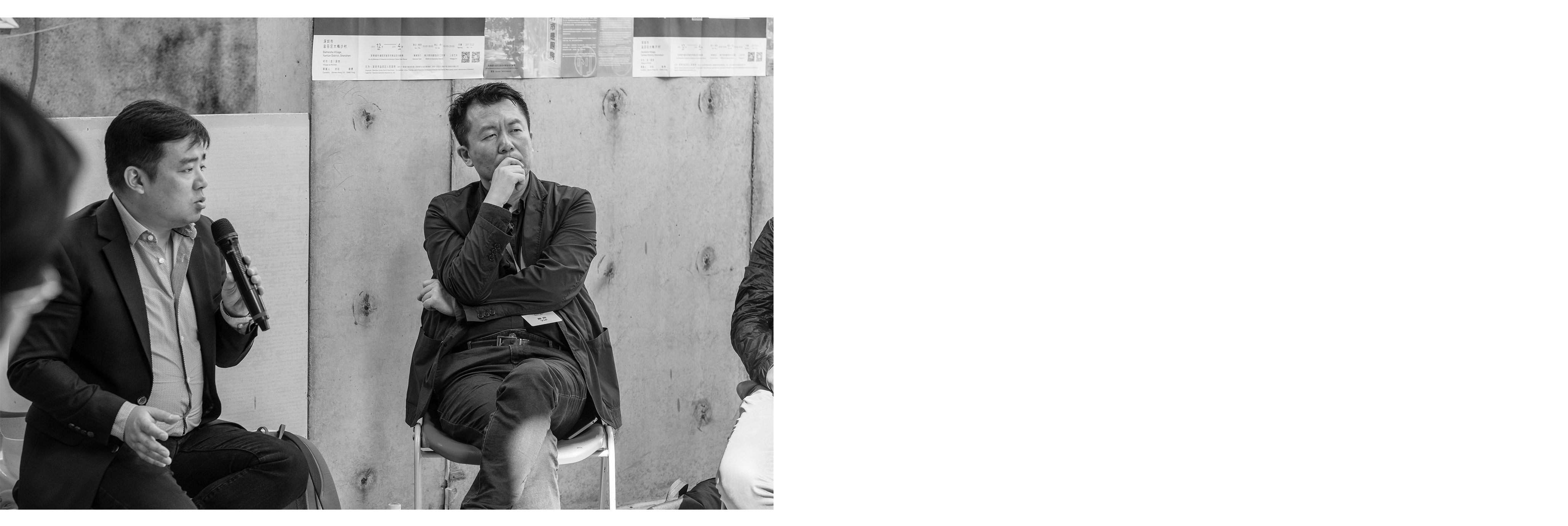村市(是)厨房
第七届深港城市 \ 建筑双城双年展,盐田分展场
Village as Kitchen
The 7th Bi-City Biennale of Urbanism/Architecture, Yantian Sub-venue
2017.12.22 - 2018.3.3
策展人:刘珩、杨勇
主办:深圳市盐田区人民政府
承办:深圳市规划和国土资源委员会盐田管理局
艺术板块参展人:赵谦、李建林、陶辉、蔡磊、Luigi Laurenzi/意大利、唐菡&周霄鹏、徐坦、方圆、Post-Museum (Woon Tien Wei & Jennifer Teo)/新加坡、孙犁、江宜臻&刘达、梁曼琪、徐绮浓、宋冬、蒋国远&艺邦成、杨勇、大瓜(李月溪)&李珊珊
Curators: Doreen Heng Liu, Yang Yong
Organizer: Shenzhen Yantian District Government
Co-organizer: Yantian Administration Bureau of Shenzhen Municipal Bureau of Planning and Natural Resources
Artists: Cai Lei, Chi-De-ReallyWant, Fang Yuan, Jack Lee Kin Lam, Jiang Guoyuan & Yi Bang Cheng Art, Jiang Yizhen & Liu Da, KINO HSU, Liang Manqi, Luigi Laurenzi, Post-Museum (Woon Tien Wei & Jennifer Teo), Song Dong, Sun Li, Tang Han & Zhou Xiaopeng, Tao Hui, Xu Tan, Yang Yong, Zhao Qian
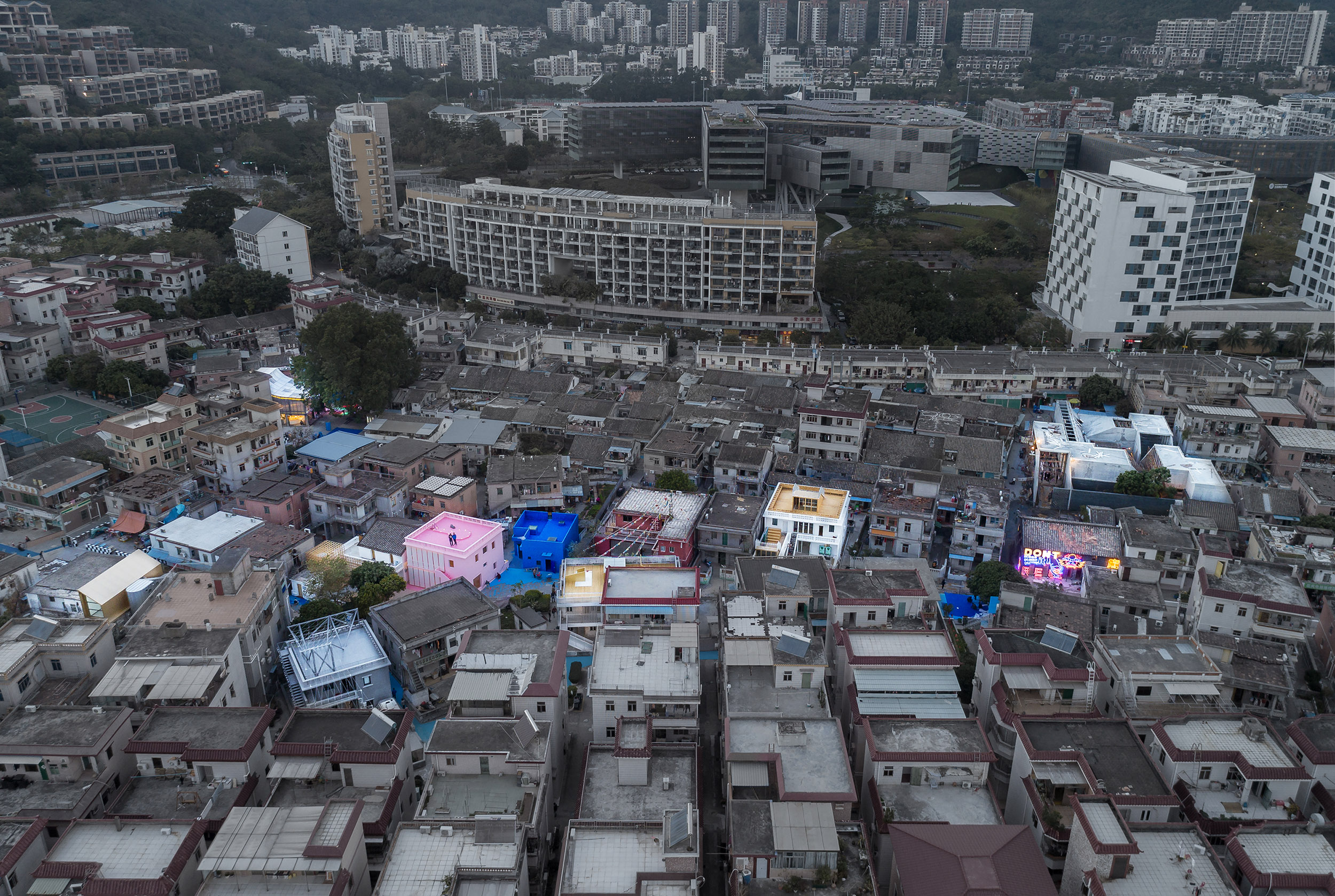
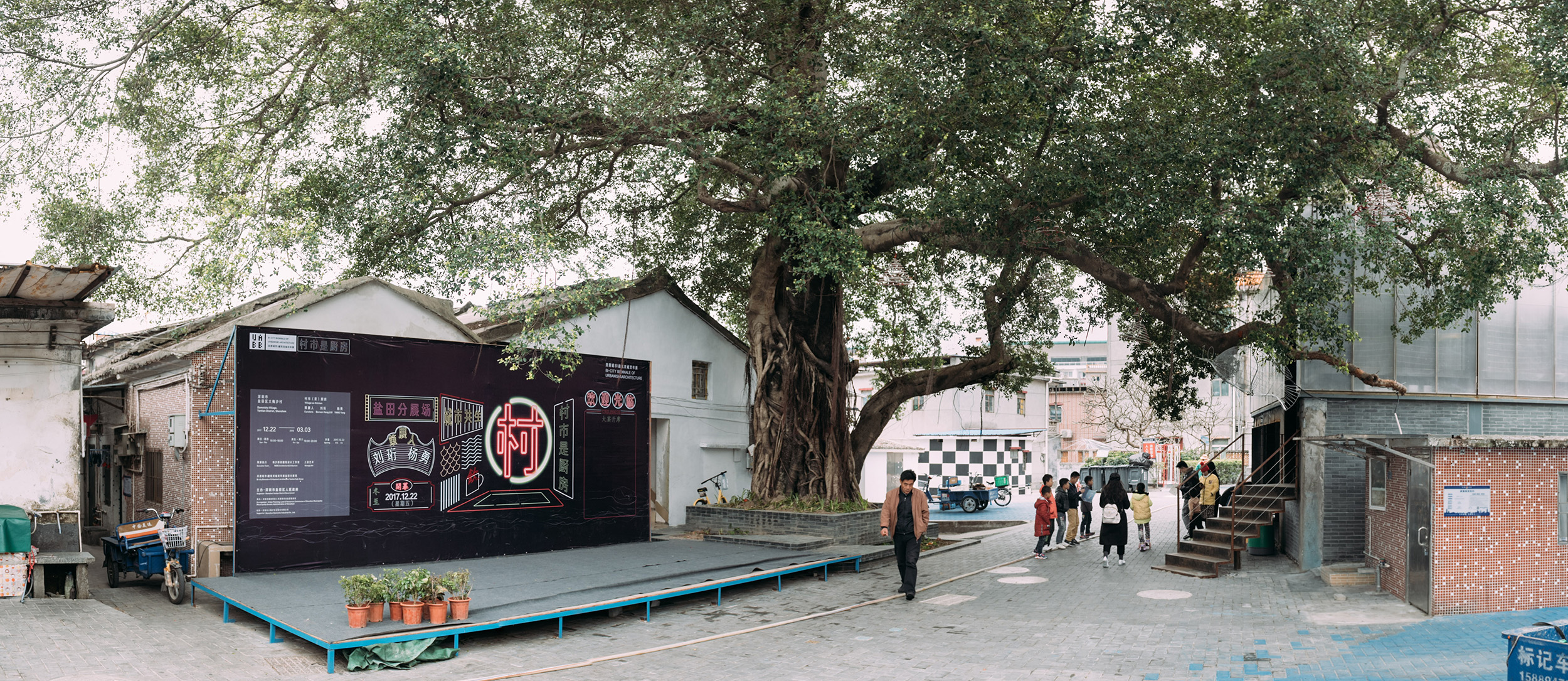
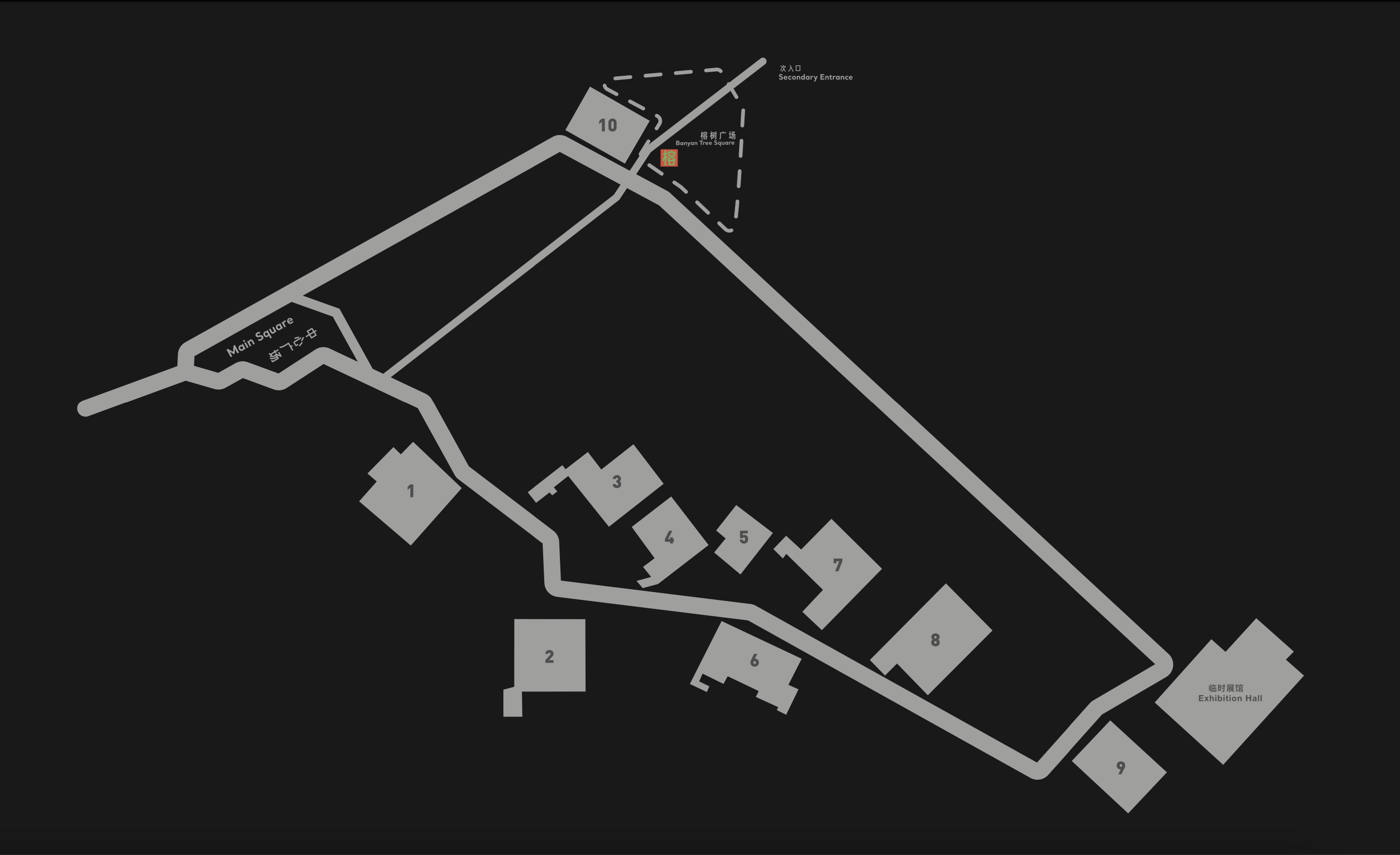
在今天多元的城市生活创造中,食物和种植似乎超越了过往单一需要的意义,也参与到更多的精神表达的层面里。如果再把一个城市比喻成为一个家庭空间进而区分的话,我们可能会把一些区域划分成“客厅”、“卧室”等。这一次我们把盐田的大梅沙村(或者是更多的城中村)比喻成为了“厨房”,因为它温暖的烟火气,它的历史村落样式,它在现代社会高速发展中的坚持与无奈;亦或因为它有着连接过去与未来不可替代的人文价值。
而在当代艺术史中,食物成为艺术的创作材料并不罕见,更有艺术家把厨房搬进美术馆成为其创作的一部分,从德国艺术家约瑟夫•博伊斯(JosephkBeuys)的观念行为作品《蜜蜂泵》,到美国艺术家菲力克斯•冈萨雷斯-托雷斯(Felix Gonzalez-Torres)的装置作品《无题(今日美国)》,而泰国艺术家里克立•提拉瓦尼(Rirkritk Tiravanija)则是成为第一个在现代艺术博物馆(MoMA)生火做菜的艺术家,他一边端着锅烹饪,一边请助手将盛好的饭菜分发给来到 MOMA参观的客人。当然,食物还可以被用来阐释或调侃艺术史,例如普鲁登斯•斯泰特(PrudenceStaite)用巧克力糖仿制安迪•沃霍尔(Andy Warhol)的梦露像。
2017年深港城市\建筑双城双年展的盐田展场,艺术、建筑策展人分别邀请了近三十位来自不同国家、地域、背景的艺术家、建筑师、导演等共同为大梅沙村因地制宜地进行创作。这样的展览区域挑选在今天看来既是一种文明与冲突的对话,也是一种独特的共生体验。而艺术的介入是另一个层面的实践,我们以“村市(是)厨房”为主题,通过艺术表达、种植、烹调等行动进入村落的公共空间和部分住所,除了空间与食物生产外,结合当地丰富的历史文化遗产,用装置、影像、壁画等作品,带领人们展开一次视觉与味觉的奇妙旅行。
在大梅沙村这500米的参观路径里,我们可以看到一个视觉艺术版的“舌尖上的盐田”。深圳艺术家蒋国远和少年儿童们在二号楼外立面合作关于盐田风物的壁画作品,室内则是集建筑师、大厨以及水彩画家多重身份的赵谦菜系研究的绘画日记。三号楼里展出了香港艺术家李建林利用盐田的场景和历史图片而作的特别创作,及北京艺术家陶辉从集体记忆和群体经验的角度出发创作的视频装置。
六号楼聚集了旅居柏林的艺术家周宵鹏和唐涵关于菜谱美学的研究和互动作品;常年在珠三角与美国往返的徐坦关于植物学研究的双频录像作品;北京的蔡磊呼应了大梅沙村建筑视觉的装置;还有另外一个来自北京的媒体组合“吃的ReallyWant”用十分接地气的特刊杂志及定期特别活动来呈现她们对南方地域独特的饮食与习俗的研究与表达。临近的七号楼里,来自意大利的设计师、艺术家Luigi用一种最生活介入的方式对种植空间和形态的独特设计;东京方圆的摄影镜头找到与大梅沙村尺度和氛围颇为接近的异国场地;新加坡的组合Woon Tien Wei & Jennifer Teo深入到大梅沙村雄伟而神秘的树,寻找不同的内心生活。再往里走,能体验八号楼里深圳艺术家孙犁用串联起来的四件不同媒介的作品,表达物与物之间的转换;九号楼的刘达与江宜臻在用他们的西方体验和东方记忆叠加表达着新文化下的演变与生长;上海的梁曼琪依据房屋自身空间进行因地制宜的创作;台湾的徐绮浓充满温情的响宴和乡宴。而回到榕树广场,十号楼里,北京艺术家宋冬在世界各地实现的“吃城市”系列作品的深圳版出现在展厅。
食物和艺术在现实生活中原本就有悠久渊源,而展期中这些精彩纷呈又触及多种感官的艺术创作,使得艺术作品与食物、村落和种植形成了独特的对话关系。艺术家和建筑师们阐述了“厨房”空间的丰富性和多样性,大梅沙村在城市里的意义更是因为这些艺术家和建筑师的介入而显得尤为不可替代。他们共同探讨了未来城中村一种崭新的可 能性,用可见的改变创造表达一种别样的“城市共生”,并为盐田留下一种艺术生活方式参考的不同样板。
In this creative and diversified contemporary urban life, foods and cultivation seem to have become vehicles of spiritual expression rather than simply something to meet physical needs. If a city can be metaphorically compared to a family, its spaces can be further divided into sections labeled respectively as “living room”, “bedroom”, etc. In this edition’s Bi-City Biennale of Urbanism\Architecture (UABB), we compare Dameisha Village of Yantian District (or other urban villages alike) to a “kitchen” for it still gives worldly warmth as a rarely seen historic village preserved and helplessly sighing amid the rapid development of the contemporary society, and more importantly for it embodies cultural and humanistic values as an irreplaceable bridge linking both the past and the future.
In the history of contemporary art, foods are no stranger as art ingredients, and some artists even move their kitchens into art museums as part of their work. From “Honey Pump”, the conceptual and performance work created by German artist Joseph Beuys, to “Untitled (USA Today)”, an installation by Felix Gonzalez-Torres, the list could go on and on. Thai artist Rirkrit Tiravanija went one step further to become the first artist who simply cooked in the Museum of Modern Art (MoMA). He was cooking with his pan in hand while having his assistant serve the prepared meal to visitors to MoMA. Certainly, food could also be used to interpret or ridicule the history of art, and Prudence Staite’s reproduction of Andy Warhol’s Monroe with chocolate is a case in point.
Artistic and architectural curators of the UABB Yantian Exhibition 2017 invites about 30 artists, architects and directors from various countries, regions and backgrounds to make site-specific works of art tailored to Dameisha Village—the venue of this edition’s UABB Yantian. Such a selection of exhibition venues, seen from a contemporary perspective, is as much a dialogue on civilizations and conflicts as it is a unique experience of symbiosis. The intervention of art is a practice at another level manifesting the exhibition’s theme “Village as Kitchen”. Specifically, we will enter the public spaces and some residences and take such actions as art making, planting and cooking, to make spatial and food production, and to incorporate mediums such as installation, photography and mural into the wealth of local historic and cultural heritage, leading people into a magical journey of vision and tastes.
Presented along the 500-meter pathway for visitors in Dameisha Village is a visual-art version of “A Bite of Yantian”(there is a very popular food TV documentary called “A Bite of China”). Jiang Guoyuan, an artist from Shenzhen works with children to paint murals on the landscape and life in Yantian District on the facade of House No. 2, and inside the same building Zhao Qian, an architect, chef and watercolorist creates his watercolor diary on culinary research. House No. 3 houses two works. One is a special collection by Hong Kong artist Jack Lee Kin Lam, which is made based on Yantian’s scenes and historic pictures. The other is a video installation created by Beijing artist Tao Hui, which incorporates collective memories and experiences.
House No. 6 gathers a different ensemble including a collection of experimental and interactive works on the aesthetics of recipe by Zhou Xiaopeng and Tang Han, two Chinese artists living in Berlin; a double-channel video on botanical research by Xu Tan, an artist who travels regularly between the Pearl River Delta and United States; a Beijing artist Cai Lei’s installation presents the architecture of Dameisha Village as well as the work made by a media collective “Chi-De-ReallyWant” from Beijing that investigates and presents the down-to-earth and unique cuisine and customs of South China through their special issues of magazines and regular special events. In the adjacent House No.7, Luigi Laurenzi, an Italian designer and artist presents his unique design of the planting spaces and their configuration with an intervention approach blended seamlessly into everyday life; Tokyo-based photographer Fang Yuan captures places that resembles Dameisha Village in terms of dimensions and atmosphere; the Singaporean duo of Woon Tien Wei & Jennifer Teo delves in the magnificent and mysterious trees in Dameisha Village in search of different inner worlds. House No. 8, located further inside the village, exhibits four pieces of different mediums connected by Sun Li, an artist from Shenzhen who intends to illustrate the conversion among things; in House No. 9, Liu Da and Jiang Yizhen depict the evolution and growth of new cultures based on their experience with the West and the memories of the East while Liang Manqi from Shanghai displays her site-specific work tailored to the spaces within the building. Xu Qi from Taiwan, serves a heartwarming feast and rural banquet. Back to Building No. 10 in Banyan Square, Beijing artist Song Dong displays his Shenzhen version of his “Eating the City” Project materialized in many different parts of the world.
Foods and Art have been historically connected in reality. This exhibition presents a wide variety of brilliant sensual works and creates unique dialogues among artworks, foods, village spaces and cultivation. Artists and architects have interpreted the rich connotations and remarkable varieties of the “kitchen” spaces, rendering Dameisha Village even more indispensably significant in the city of Shenzhen. By jointly exploring an untapped potential for future urban villages and presenting visible transformations, those artists and architects have created a unique form of “Cities, Growing in Difference”, leaving Yantian District different samples of artistic lifestyles for reference.
部分现场
Onsite
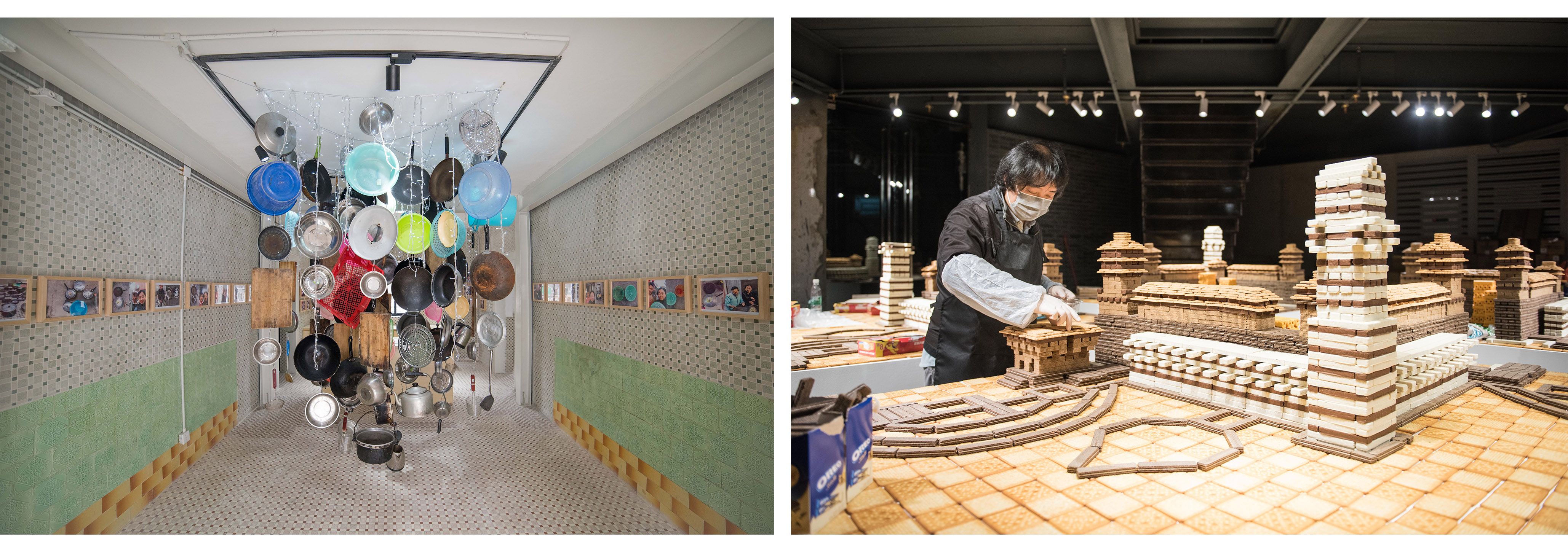
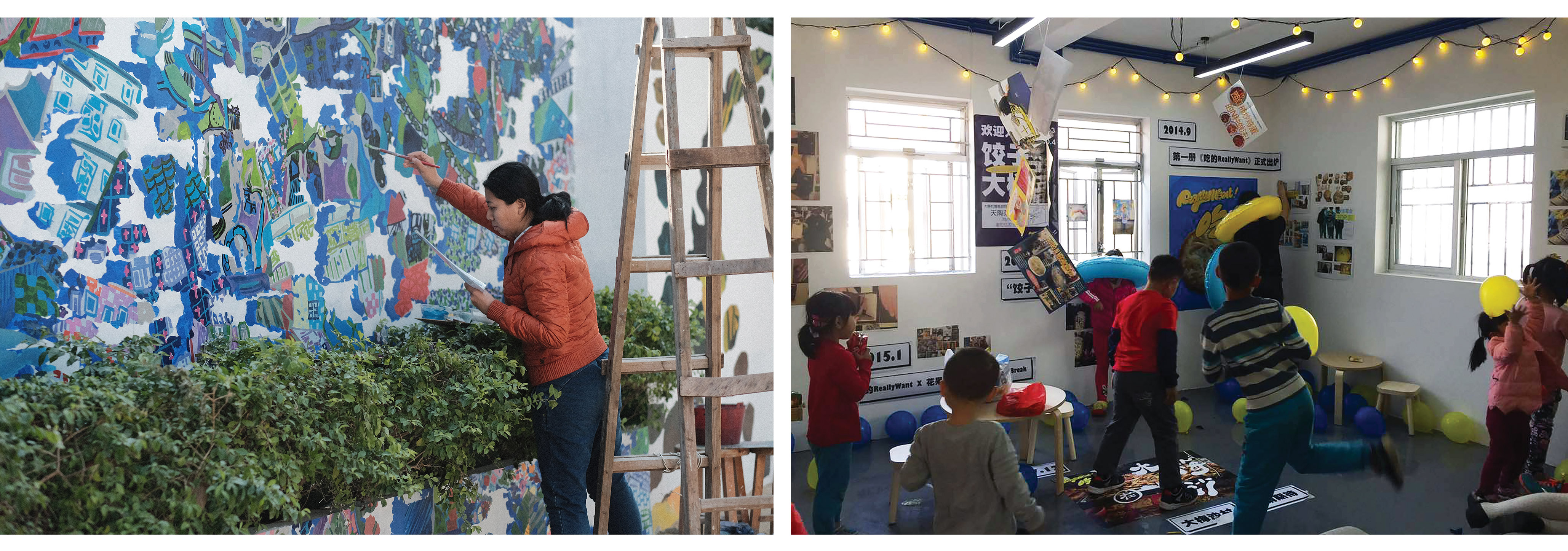
活动
Events
/ 戏剧 · 共生之树
Multi-media Theater Dance Symbiotic Tree
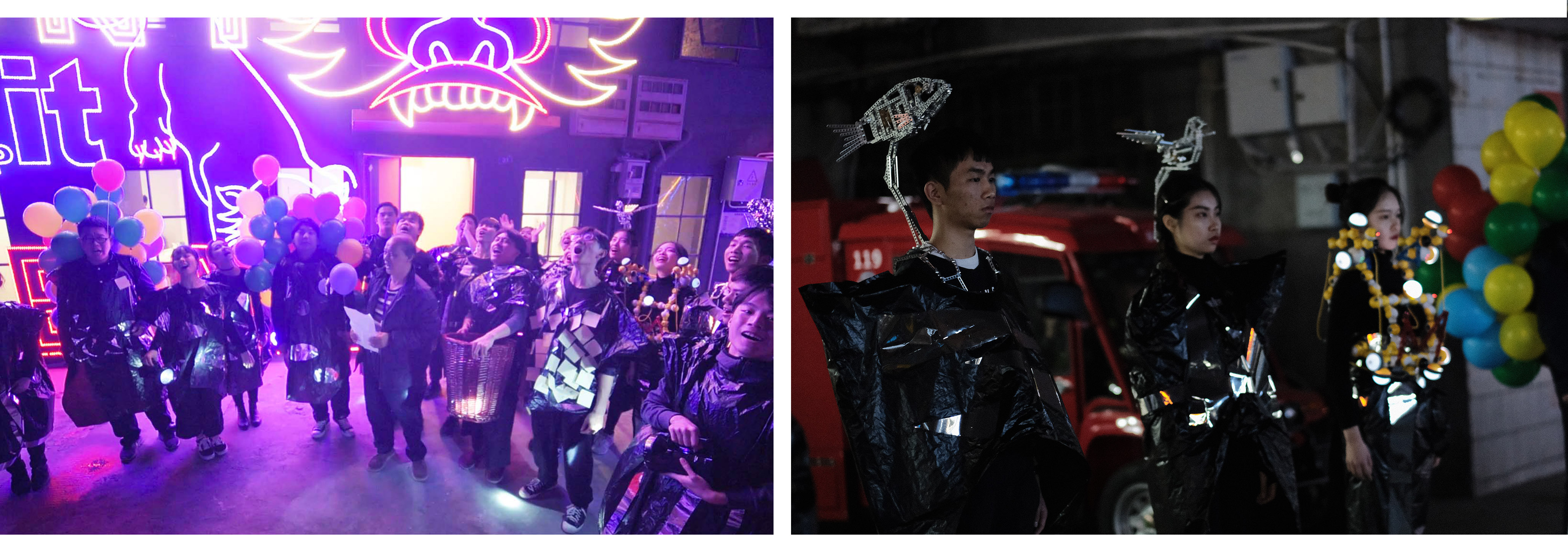 编剧:杨勇
编剧:杨勇
导演:邓忱超
顾问:高广健
舞者:深圳大学表演系、舞编系学生
Scriptwriter: Yang Yong
Director: Deng Chenchao
Consultant: Gao Guangjian
Dancers: Students from the Performance Department and the Choreography Department of Shenzhen University
/ 策展人厨房—元宵答谢宴
The Curators’Kitchen—The Thanksgiving Banquet on the Chinese Lantern Festival

/ 深港艺术发展论坛
Shenzhen-Hong Kong Art Development Forum
